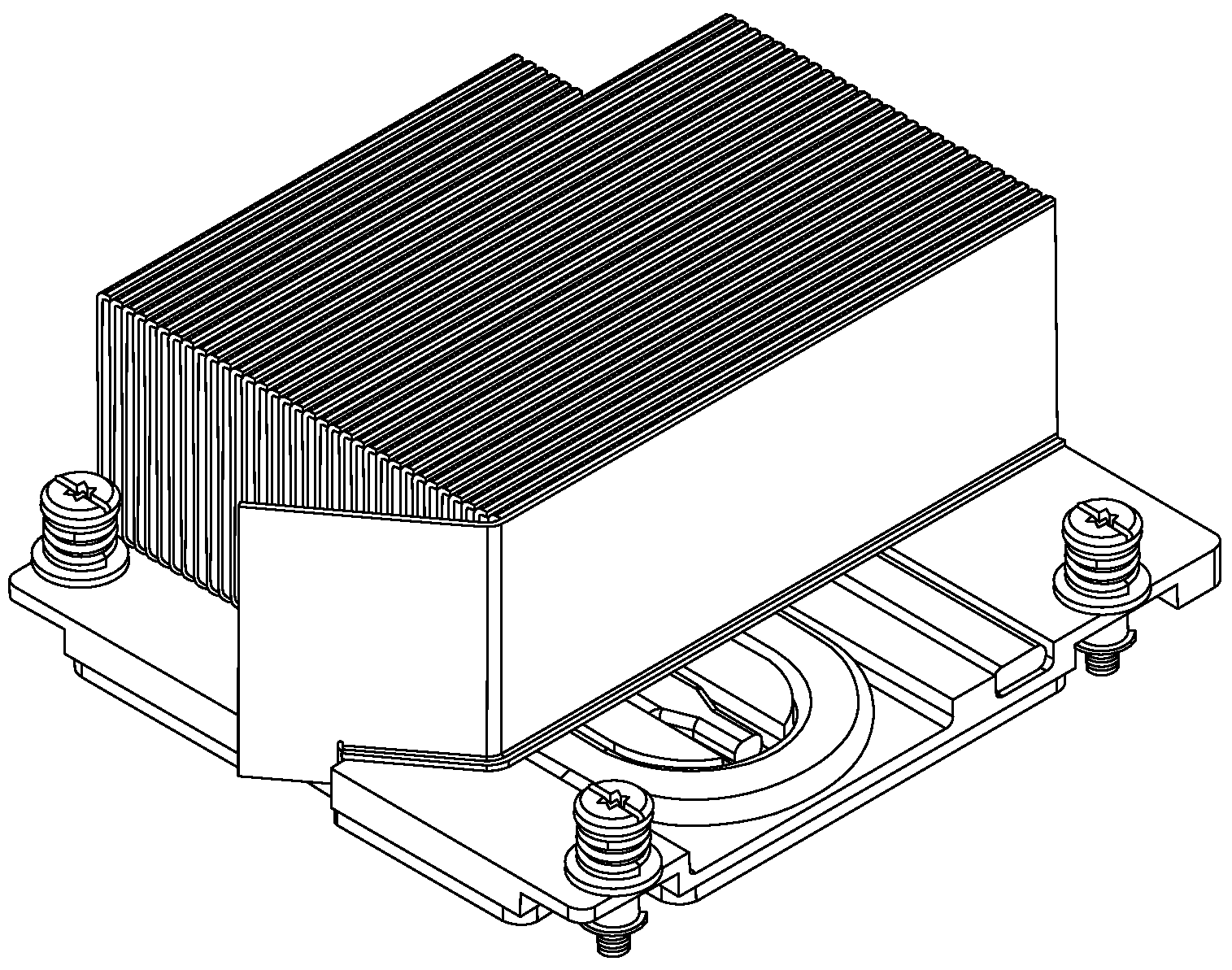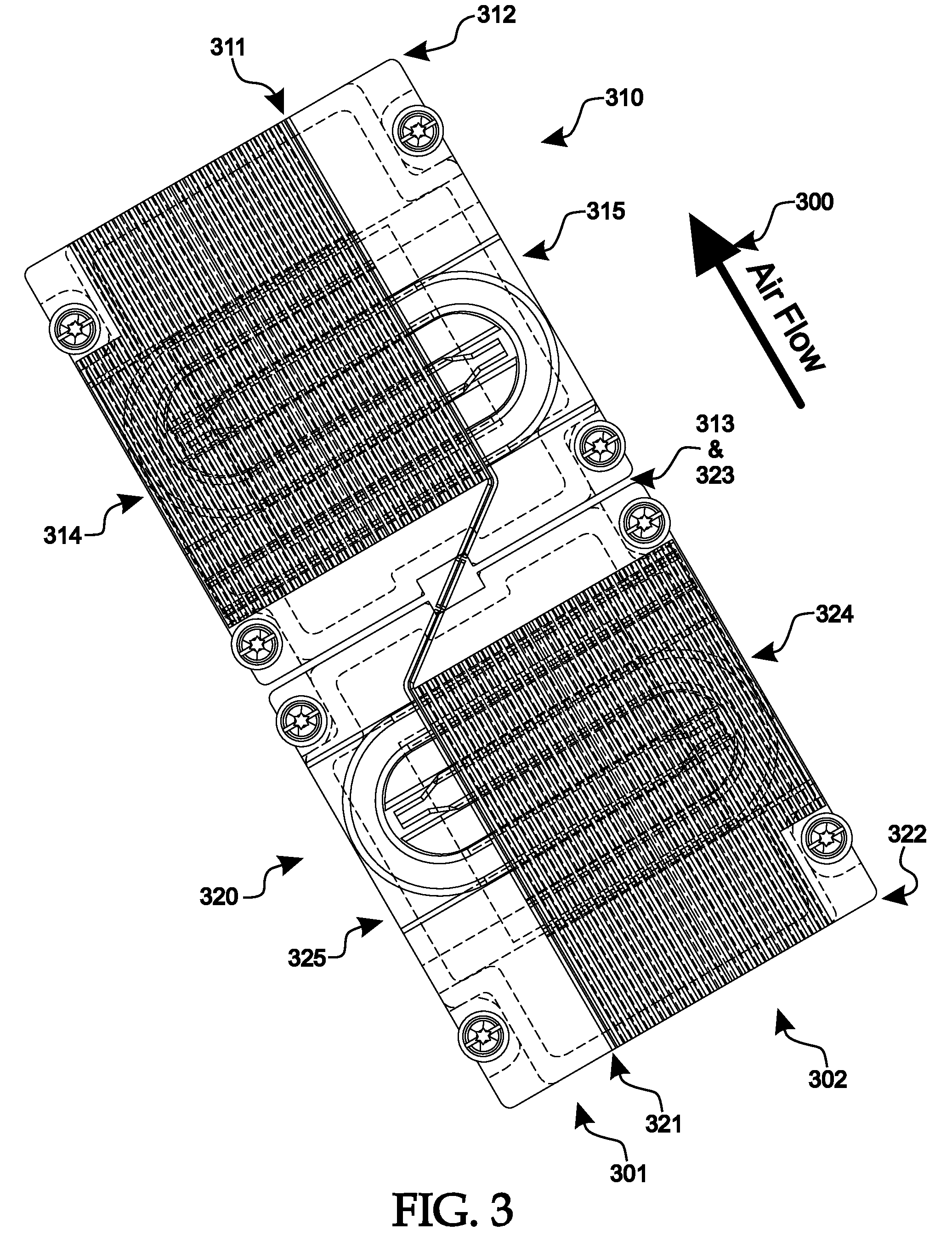Flow Diversion Heat Sinks For Temperature Uniformity in Back to Back Multi-processor Configurations
a multi-processor configuration and heat sink technology, applied in cooling/ventilation/heating modifications, semiconductor/solid-state device details, semiconductor devices, etc., can solve problems such as non-ideal location, non-uniform case temperature, and serious cooling challenges, and achieve quantity cost savings for each system, reduce or eliminate preheating the rear processor
- Summary
- Abstract
- Description
- Claims
- Application Information
AI Technical Summary
Benefits of technology
Problems solved by technology
Method used
Image
Examples
Embodiment Construction
[0012]By dividing the air flowing across the processor region into two paths, each path primarily providing the cooling air flow of a single processor, each processor has the same cooling opportunity. Air passing across the forward processor will not preheat the air thus hampering the cooling of the rear processor. A divider extends from the front of the forward processor's heat sink to the back of the rear processor's heat sink, separating the area above the heat sinks into two separate channels. Air passing across the processors is channeled down one side of the divider or the other. Each heat sink has fins on only one side of the divider such that air flowing through either of the channels passes across the fins of only one of the two processors. As air will flow through the open channel more freely than through the channel, which comprises cooling fins, the channels need not evenly divide the physical space.
[0013]Heat pipes imbedded in the heat sink's base plate ensure the entir...
PUM
 Login to View More
Login to View More Abstract
Description
Claims
Application Information
 Login to View More
Login to View More - R&D
- Intellectual Property
- Life Sciences
- Materials
- Tech Scout
- Unparalleled Data Quality
- Higher Quality Content
- 60% Fewer Hallucinations
Browse by: Latest US Patents, China's latest patents, Technical Efficacy Thesaurus, Application Domain, Technology Topic, Popular Technical Reports.
© 2025 PatSnap. All rights reserved.Legal|Privacy policy|Modern Slavery Act Transparency Statement|Sitemap|About US| Contact US: help@patsnap.com



